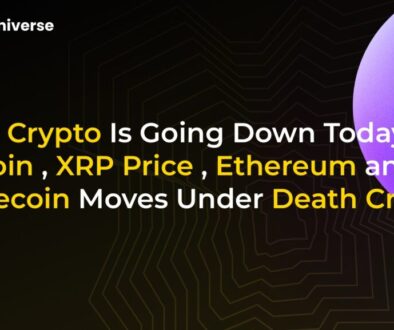Bitcoin Whales Rock the Boat: BTC Price Dips Below $109.5K as US Inflation Data Looms

Bitcoin Price Stumbles as Whale Activity and Macro Fears Collide
The cryptocurrency market is on edge as Bitcoin (BTC) experienced a sharp 3% decline, sending its price tumbling below the critical $110,000 mark. The sudden drop, which saw BTC hit a local low of $109,436, triggered a cascade of liquidations totaling over $350 million in long positions within 24 hours. Traders and analysts are pointing to two primary culprits: manipulative behavior from large-scale Bitcoin holders, known as “whales,” and mounting anxiety ahead of key U.S. inflation data.
The “Whale Playbook”: Are Markets Being Manipulated?
In the world of crypto, a Bitcoin whale is an individual or entity holding a vast amount of BTC, enough to influence market prices with a single move. Recently, their activity has been described as “spoofy,” a term for a manipulative trading tactic where large orders are placed with no intention of being filled, creating a false sense of supply or demand to trick other traders.
Analysts have identified a recurring pattern of behavior, dubbed the “whale playbook.” This involves large inflows of BTC and ETH into market-making firms like Wintermute, often preceding significant price drops. Keith Alan of Material Indicators has even personified this activity, calling the entity “Spoofy The Whale,” highlighting the seemingly deliberate and predictable nature of these liquidity shifts designed to trap retail investors.
A Repeating Cycle of Capitulation and Rallies
This isn’t the first time this month that such patterns have emerged. Many traders believe the market is caught in a predictable loop. According to market analyst BitBull, this cycle typically involves four distinct phases:
- Consolidation: A period of relative price stability and sideways movement.
- Capitulation: A sharp sell-off where investors give up and sell their holdings, often driven by whale pressure.
- Breakouts: A sudden upward price movement as buying pressure returns.
- Rallies: A sustained period of price growth following the breakout.
Based on the recent dip, it appears the market is currently in the capitulation phase. While painful for those holding long positions, this phase is often seen by seasoned traders as an opportunity to accumulate assets at a lower price before the next potential rally.
All Eyes on the Fed: The PCE Inflation Gauge
Beyond the internal market dynamics, a major external factor is casting a long shadow: macroeconomic uncertainty. The market is anxiously awaiting the release of the U.S. Personal Consumption Expenditures (PCE) Index. This isn’t just any economic report; it’s the Federal Reserve’s preferred measure of inflation.
Why does this matter for Bitcoin? The PCE data directly influences the Fed’s decisions on interest rates. High inflation could lead to a more hawkish stance, while cooling inflation could pave the way for the anticipated interest-rate cut in September. For risk assets like Bitcoin, lower interest rates are generally bullish, as they make holding speculative assets more attractive compared to yielding instruments.
As one analyst put it, the market is “wobbling” ahead of the PCE print, which could either “fuel the dump or light the relief rally.”
What’s Next for Bitcoin?
Bitcoin’s immediate future hinges on the interplay between these two powerful forces. On one hand, the manipulative tactics of whales continue to create short-term volatility and downward pressure. On the other, the macroeconomic landscape holds the key to broader market sentiment. A favorable PCE reading could provide the bullish catalyst needed to overcome whale-induced selling and spark a significant recovery. Conversely, a hot inflation report could exacerbate the current downturn, pushing prices lower. For now, traders remain on high alert, navigating a market defined by strategic whales and macroeconomic suspense.


